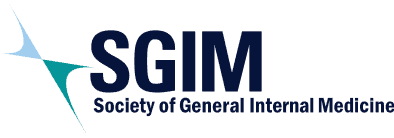For me, November is always a time that brings fond childhood memories to the forefront. It is during this time that I recall my parents opening our family home, a three-flat brownstone as a voting location one day a year for over the course of a decade. I vividly remember the days leading up to election day, when the large metal machines were delivered to our basement. I still remember the smell and feel of the heavy red privacy curtains. When election day arrived, I stared out the window into our front yard at the long line of strangers excited to cast their election ballots. This was Chicago, and those canvasing for alderman were told to stay away and off the grass! These early experiences taught me the value of the vote.
These memories compel me to ask that we all declare November as an important time to consider our individual civic duty and cast our ballots—even in non-presidential election years. City, county, state, and national elections are held each November and throughout the year—although often without the large-scale media gaze that occurs during a presidential election; they are equally important.
Due to the pandemic, we all were left unable to fully celebrate and reflect on the historic importance of the Women’s Vote Centennial. However, it did not go unnoticed. Many novel voting methods emerged amid the 2020 presidential election to address fears related to the pandemic resulting in a generational record voting turnout.1 One of those strategies was the development and rapid-fire expansion of efforts within health care to ensure patients were registered to vote. Healthcare workers, including myself, continue to discuss voting registration with our patients, to ensure they can advocate for themselves and their healthcare needs.2, 3 We all must work together to ensure everyone is able to exercise suffrage, despite the multiple state-level attempts to limit and question the security of our elections.4
The SGIM’s Advocacy agenda also comes to life in November and creates a path forward for our work. The Health Policy Committee develops the advocacy agenda alongside our government relations firm and brings it forward to Council, who then provides guidance and approves the plan which includes both coalition and active advocacy initiatives.5 SGIM works with other large and small organizations to advance our goals and positions to create “coalition advocacy.” You might find SGIM’s signature on letters written by other organizations to show our support and endorse issues related to SGIM’s core mission and vision.6 Each decision to sign those letters and support various issues within a coalition is guided by our historical record on an issue; previously written white papers authored by our Health Policy Committee, as well as other SGIM Committees/Commissions, and approved by Council; as well as our own mission and values.
Our “Active Advocacy” efforts are germane to the work of the Health Policy Committee. The current advocacy agenda includes the following:5
- Advocating for payment and delivery models that ensure high quality, equitable primary care;
- Ensuring that primary care and other cognitive care visits are appropriately reimbursed within and after the COVID-19 public health emergency;
- Advocating for telehealth and telephone visits, ensuring that patients continue to have access to these services;
- Championing a policy environment that supports the National Institute for Minority Health and Health Disparities (NIMHD) as it works to eliminate disparities and promote equity and inclusion;
- Advocating that health equity
is front and center as the NIH works to create Advanced Research Projects Agency for Health, or ARPA-H (a new initiative); - Supporting the Agency for Healthcare Research and Quality and policy efforts to create a Center of Excellence in Primary Care Research;
- Supporting Graduate Medical Education reform to ensure institutions receiving Medicare funding for GME produce educational outcomes that lead to an equitably distributed high-quality workforce; and
- Championing policies that provide loan forgiveness and hazard pay to physicians in training and those in practice.
Every November, as well as at various times throughout the year depending on your locale, we must all recommit to performing our civic duty to vote. We do this alongside SGIM which continues to use its Advocacy Agenda as a tool to cultivate a “system of care in which all people can achieve optimal health.”
References
- DeSilver D. Turnout soared in 2020 as nearly two-thirds of eligible U.S. voters cast ballots for president. Pew Res Ctr. https://www.pewresearch.org/fact-tank/2021/01/28/turnout-soared-in-2020-as-nearly-two-thirds-of-eligible-u-s-voters-cast-ballots-for-president/. Published January 28, 2021. Accessed October 15, 2021.
- Patient Voting. https://www.patientvoting.com/. Accessed October 15, 2021.
- Vot+ER. https://vot-er.org/. Accessed October 15, 2021.
- CISA. Joint Statement from Elections Infrastructure Government Coordinating Council & the Election Infrastructure Sector Coordinating Executive Committees. https://www.cisa.gov/news/2020/11/12/joint-statement-elections-infrastructure-government-coordinating-council-election. Published November 12, 2020. Accessed October 15, 2021.
- SGIM Health Policy Agenda: 2021-2022. https://www.sgim.org/File%20Library/SGIM/Communities/Advocacy/2021-22-HPC-Annual-Agenda-CRD-final.pdf. Accessed October 15, 2021.
- SGIM Legislative Endorsements. https://www.sgim.org/communities/advocacy/legislative-endorsements. Accessed October 15, 2021.
Issue
Topic
Advocacy, COVID-19, Health Policy & Advocacy, Leadership, Administration, & Career Planning, SGIM, Social Determinants of Health
Share
More to Learn, More to Teach
This content is an exclusive benefit for SGIM members. If you’re a…
Ask an Ethicist: Caring for an Incarcerated Patient
This content is an exclusive benefit for SGIM members. If you’re a…


